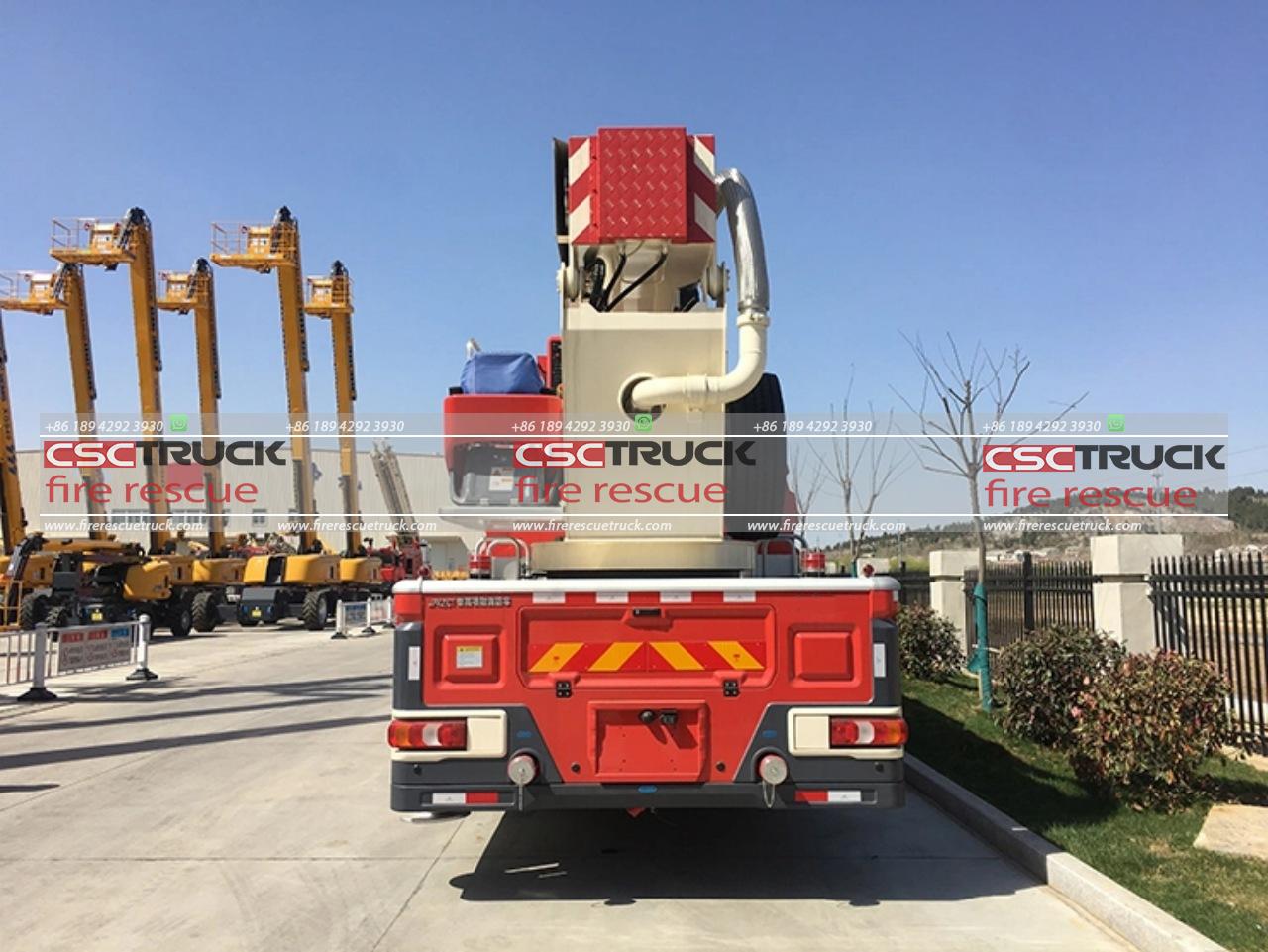What is the Difference between a Ladder and a Tower Fire Truck?*
Fire trucks are essential assets for any firefighting operation, especially when it comes to reaching high-rise buildings or tackling challenging fires from elevated angles. 2 commonly used apparatuses within firefighting fleets are the ladder truck and the tower fire truck. While both are designed to aid firefighters in reaching heights and fighting fires from above, there are distinct differences in their design, capabilities, and typical uses. Understanding these differences is crucial for fire departments when deciding on the most effective equipment for their specific needs.
1. Overview of Ladder Trucks
A **ladder truck**, often referred to as an **aerial ladder truck**, is a type of fire truck equipped with a long, extendable ladder mounted on the vehicle. These ladders can extend anywhere from 75 to 135 feet, allowing firefighters to access high floors, rooftops, or other elevated areas that would be inaccessible otherwise.
Ladder trucks are typically equipped with a turntable, which enables the ladder to rotate 360 degrees, giving firefighters significant reach and flexibility. The ladder itself may have additional features such as a **pre-piped waterway**, allowing water to flow directly to the top of the ladder, which can then be aimed at the fire from above. Some ladder trucks, however, may not have a pre-piped waterway, requiring firefighters to connect hoses manually, which takes more setup time but allows for a more customizable approach.
These trucks are generally classified into different types based on their ladder structure and deployment. **Straight-stick ladder trucks** have a simple, extendable ladder with no platform or bucket at the top. **Articulating ladder trucks** have multiple segments, allowing the ladder to bend at certain points, which can be useful for maneuvering around obstacles or reaching areas that a straight ladder cannot.
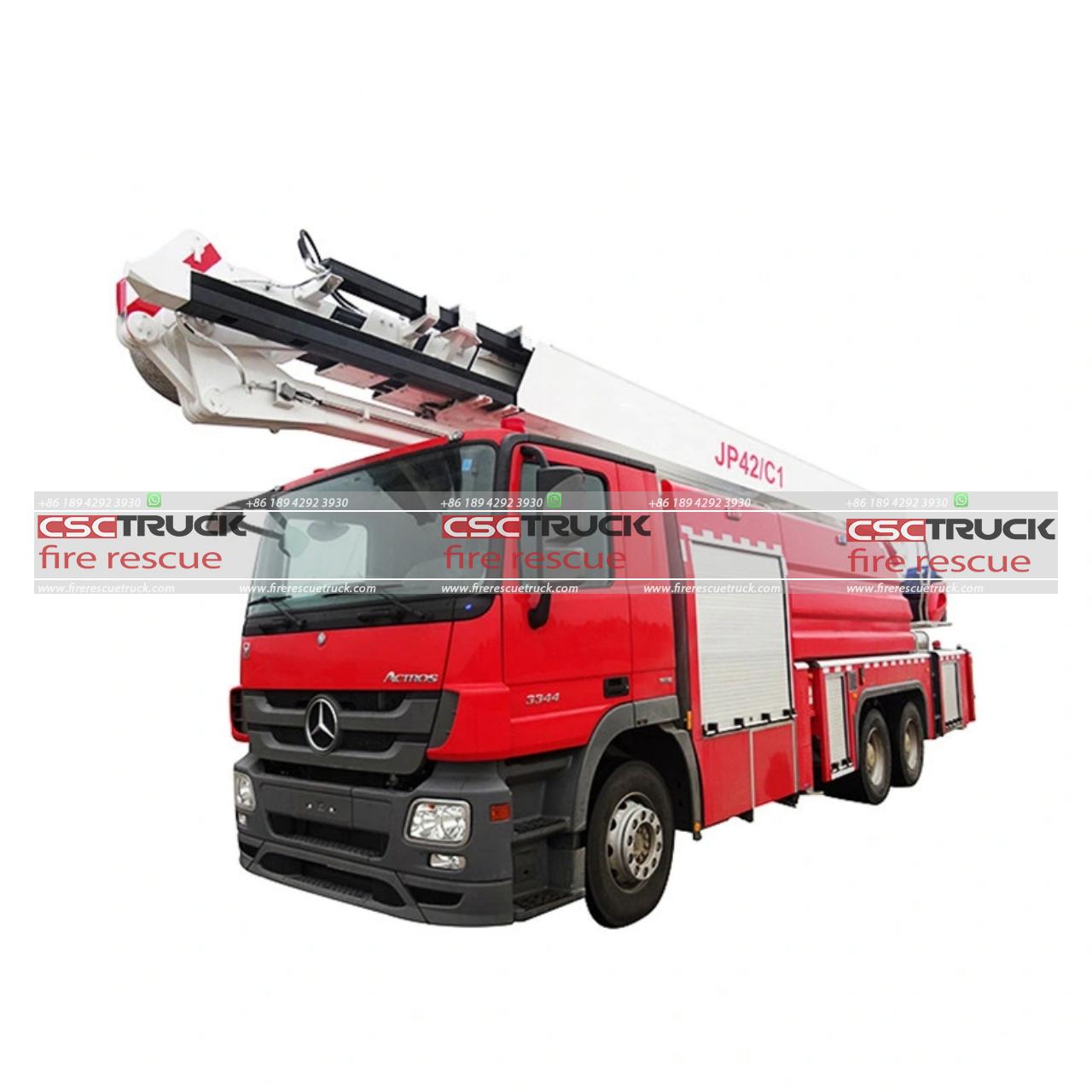
2. Overview of Tower Fire Trucks
A **tower fire truck**, often called a **tower ladder truck** or **bucket truck**, is designed with a specialized **platform or bucket** at the top of the ladder. This bucket is large enough to hold firefighters and their equipment, allowing them to work from within the bucket at great heights. Tower fire trucks are typically more stable and provide a safer platform for operations compared to ladder trucks, especially when firefighters need to be positioned in one place for extended periods.
Tower ladders also often have higher weight capacities, allowing for heavier equipment and more personnel to be safely lifted. Similar to ladder trucks, tower fire trucks can have a **pre-piped waterway** that channels water directly to the bucket, providing an elevated water stream. Due to their weight and size, tower fire trucks are often more complex to operate and may require additional support from outriggers or stabilizers.
3. Design Differences
The design differences between ladder and tower fire trucks are a major determinant in their application. Here are some of the key distinctions:
– Ladder Truck Design: Ladder trucks are usually more lightweight and compact than tower trucks, which makes them quicker and easier to maneuver, especially in tight urban spaces. The ladder on a ladder truck is typically extendable but lacks the bucket or platform, making it more agile but requiring firefighters to climb up manually.
– Tower Truck Design: Tower fire trucks are larger and heavier, largely due to the additional bucket at the top of the ladder. This makes them less maneuverable than ladder trucks, which can be a disadvantage in cramped or densely populated areas. However, the platform provides firefighters with a safer, more secure place to work, especially for tasks that require stationary positioning.
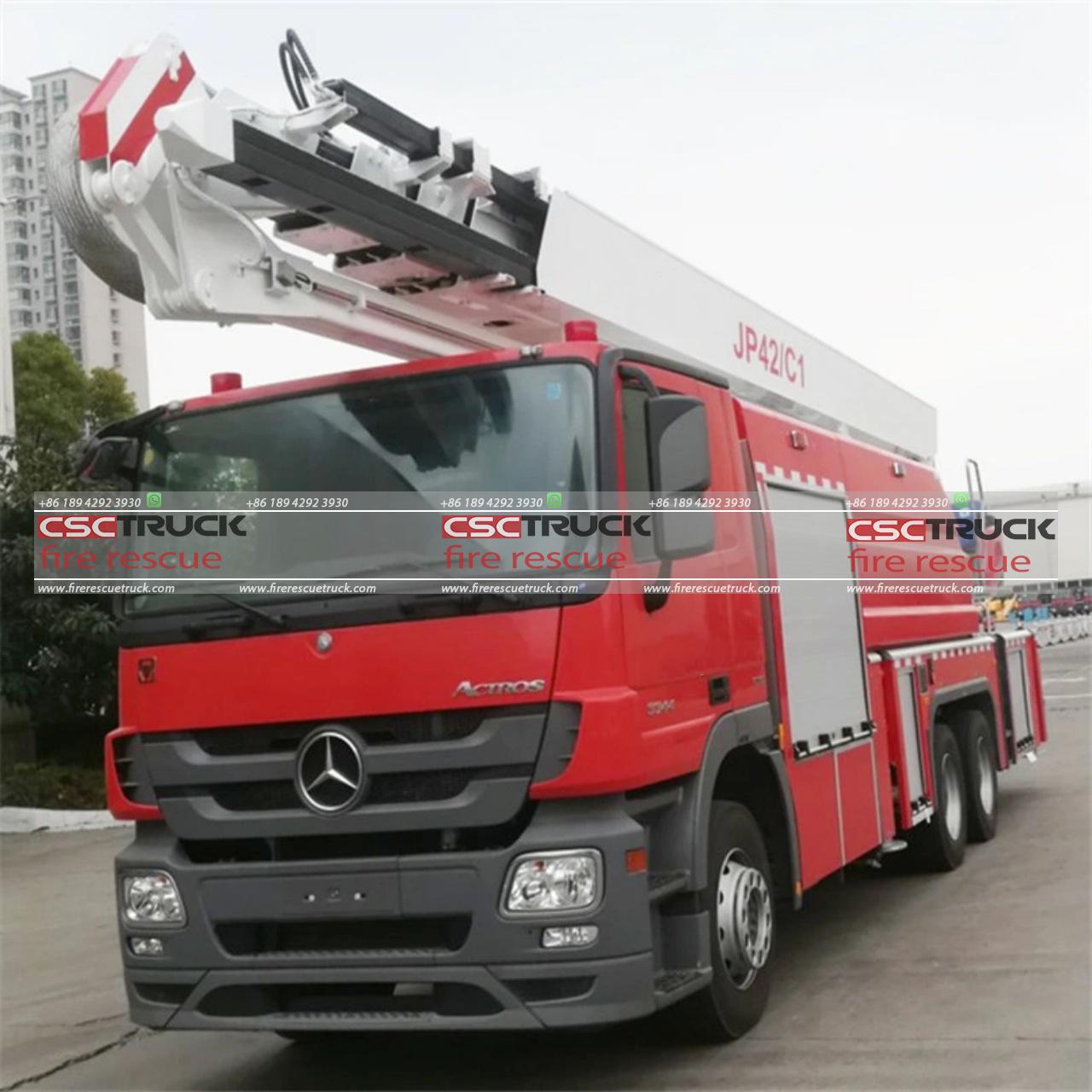
4. Functional Differences
The different designs of ladder and tower trucks lead to notable differences in their functionality:
– Ladder Trucks: Ladder trucks are often preferred for quick access to elevated locations. Since they’re more maneuverable and can be quickly deployed, they are ideal for urban settings where rapid response is essential. Ladder trucks provide firefighters with the agility to get in and out of tight spots, making them suitable for fast rescue missions. Firefighters typically use ladder trucks when they need to perform quick operations such as rescuing people or gaining rapid access to a building.
– Tower Trucks: Tower fire trucks, on the other hand, offer a higher degree of stability and safety when stationary. The bucket or platform allows firefighters to stand in a secure space while operating high-pressure hoses, ventilating buildings, or even conducting rescues. Tower trucks are especially useful for prolonged firefighting operations where a sustained, elevated water stream is required. Their stability makes them ideal for large or complex fires, where firefighters need to work from an elevated position for an extended time.
5. Water Delivery Systems
Another key difference between ladder and tower fire trucks is how they handle water delivery:
– Ladder Trucks: Most ladder trucks are equipped with a **pre-piped waterway** running along the ladder. While some traditional ladder trucks do not have this feature, modern ladder trucks generally include it, allowing firefighters to deliver water directly from the elevated ladder without needing additional hoses. However, since there is no platform at the top of the ladder, positioning and directing the water flow is slightly more challenging and requires manual adjustments.
– Tower Trucks: Tower fire trucks typically have a **pre-piped waterway** that connects directly to the bucket, which often has a built-in nozzle. This allows firefighters in the bucket to control the water flow precisely, directing it toward specific areas of the fire. The stability of the bucket also makes it easier to sustain a water stream over long durations.
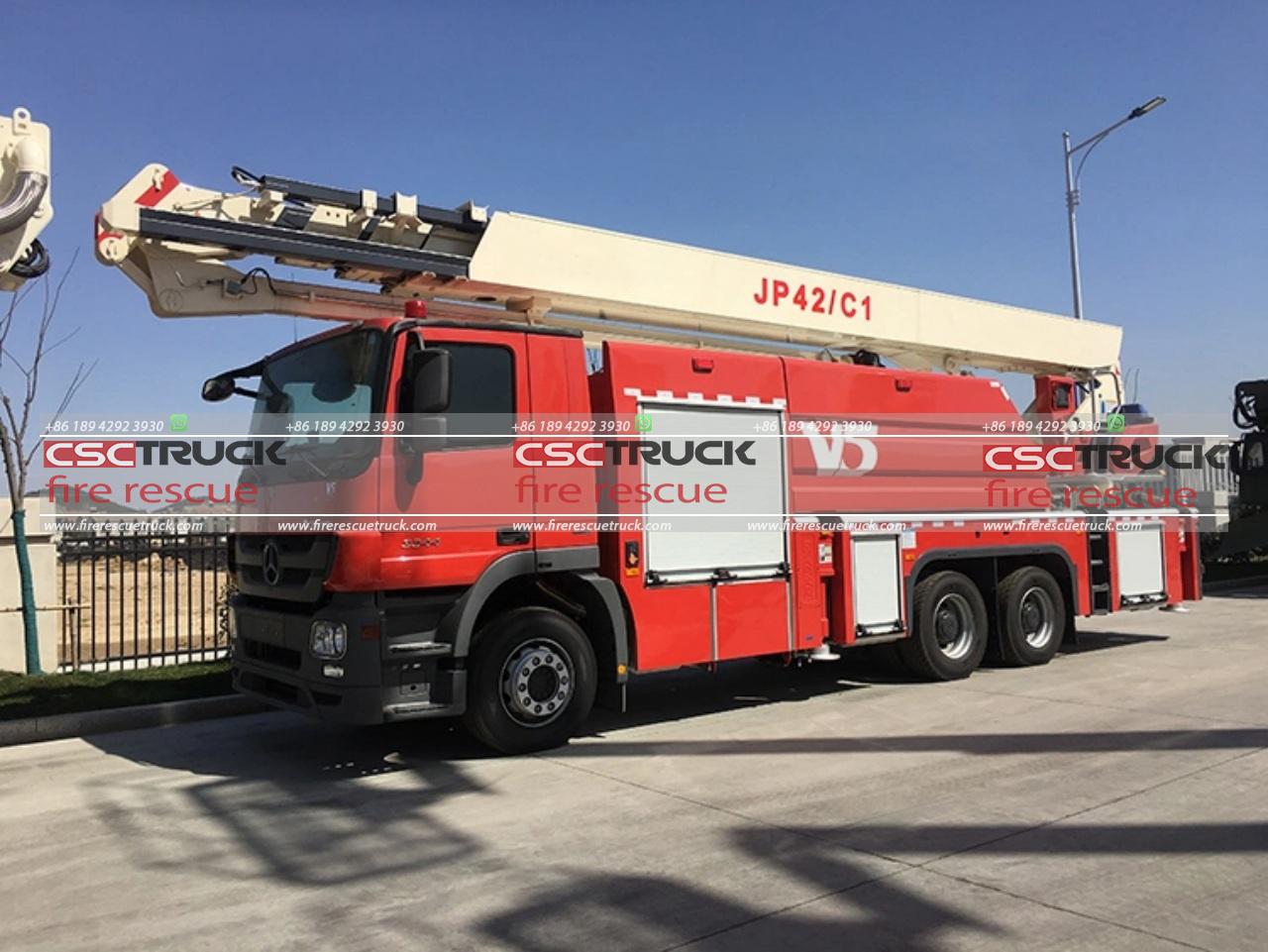
6. Applications and Situations
Fire departments choose ladder or tower fire trucks depending on the specific needs of their operations, as each type of truck excels in different scenarios:
– Rescue Operations: Ladder trucks are ideal for quick rescue operations in urban settings. Their maneuverability allows firefighters to reach windows, balconies, and rooftops quickly, even in densely populated areas where space is limited.
– Fire Suppression: Tower trucks are often preferred for fire suppression in high-rise or complex fires. The platform at the top allows for a steady, powerful water stream and can also provide a stable base for other operations, like ventilating a roof.
– Extended Operations: When firefighters need to stay in one elevated position for an extended time, tower trucks provide a safer and more stable option, as the bucket offers more comfort and security.
7. Cost and Maintenance
Due to the additional complexity and specialized equipment, tower fire trucks tend to be more expensive than ladder trucks, both in terms of upfront costs and ongoing maintenance. Ladder trucks, being generally simpler and lighter, are often easier to maintain and are more cost-effective for departments with tight budgets.
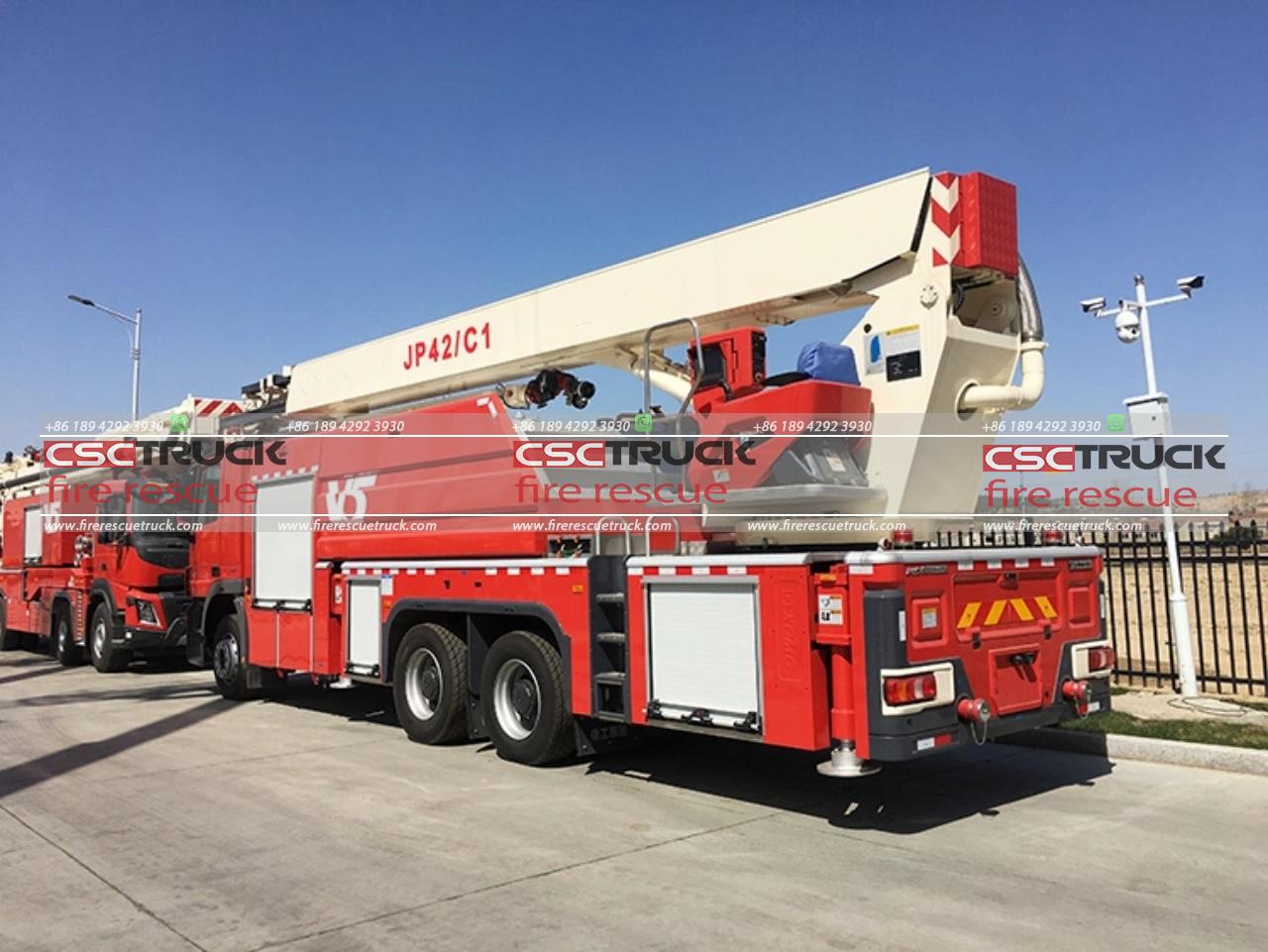
8. Crew Training and Operation
Operating tower trucks generally requires specialized training, especially for managing the additional weight and size. The complexities of controlling a bucket and managing the waterway at height make tower trucks slightly more demanding for firefighters. Ladder trucks, while still requiring training, are generally simpler to operate, and many departments prioritize their use for initial response due to the ease of deployment.
Conclusion
Both ladder and tower fire trucks are essential components of a modern firefighting fleet, each offering unique advantages and limitations. Ladder trucks are valued for their agility, simplicity, and quick response capabilities, while tower fire trucks excel in providing a safe, stable platform for extended operations and delivering precise water streams from above. The decision between these trucks comes down to the specific needs of the fire department, the types of incidents they typically handle, and their operating environment. Having a mix of both types enables fire departments to respond more effectively to a wide range of emergencies, ensuring that they are well-equipped to handle fires, rescues, and complex urban challenges.
